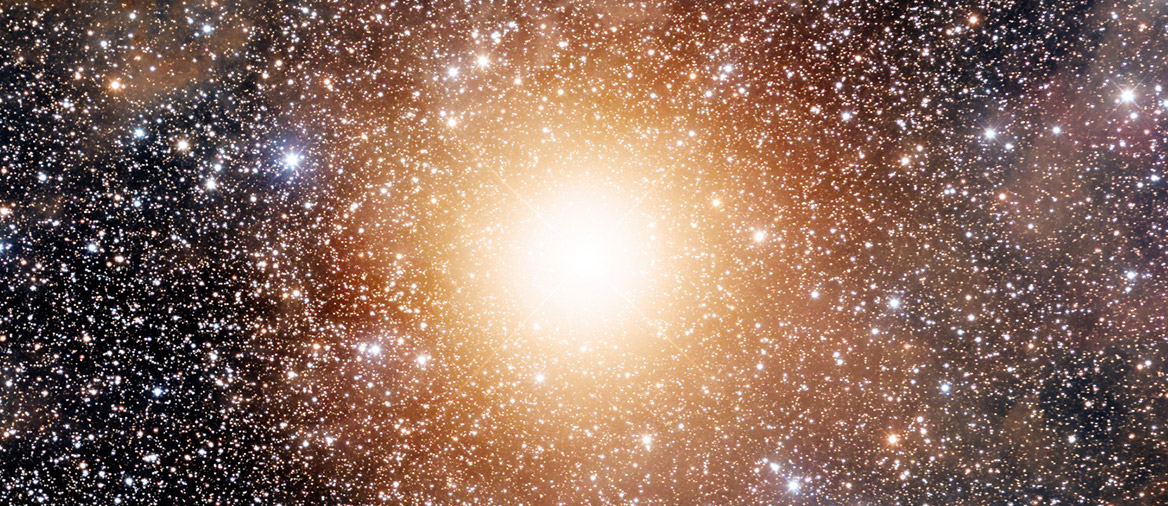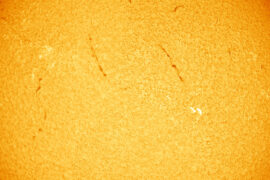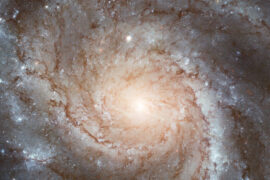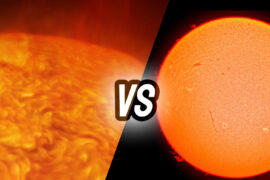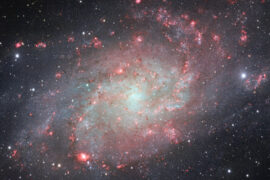I’m sure you have seen Betelgeuse in the sky. It is that bright red star that forms the shoulder of the constellation of Orion. Betelgeuse is one of the most recognizable stars in the night sky due to its color, position, and brightness.
This is why astronomers have studied extensively since ancient times. And they have found out that this star is more interesting than what we could have imagined because as it turns out, Betelgeuse is about to go supernova. This means that it is going to explode soon (well, “soon” on an astronomical scale). It will give us the opportunity to observe and study in real-time one of the coolest events in astronomy.
In this article, we’ll take a look at some of the most interesting facts about Betelgeuse to learn more about this astronomical marvel
Fact sheet
The following is a quick look at Betelgeuse by the numbers. As you will notice, some stars are so big that measuring their size or mass in terms of kilometers and kilograms stops making sense. Instead, they are compared to the radius or mass of our Sun.
| Name | Betelgeuse |
| Designation | α Ori (Alpha Orionis) |
| Constellation | Orion |
| Star type | Red supergiant |
| Distance from the Sun | 500 to 600 light-years |
| Magnitude (brightness from Earth) | -5.85 |
| Mass (approximation) | 19 Solar masses |
| Radius (approximation) | 1,021 Solar radius |
| Luminosity (approximation) | 126,000 Solar luminosity |
| Temperature | 3,600°K |
| Rotation | 36 years |
| Age | 8 to 8.5 Million years |
| Discoverer | unknown, visible to the unaided eye |
| Other designations | 58 Ori, HR 2061, BD+7°1055, HD 39801, FK5 224, HIP 27989, SAO 113271, GC 7451, CCDM J05552+0724, AAVSO 0549+07 |
Betelgeuse Facts
If Betelgeuse replace the Sun it would reach beyond the asteroid belt
Betelgeuse is in one category of stars that is called “red supergiant. And that title is not given lightly. Betelgeuse is truly massive.
This star’s diameter is about 1,000 times bigger than the Sun. That means that in volume, you could fit more than 400,000 Suns into one Betelgeuse. And if you want to compare it to Earth, the numbers get even larger. You could put approximately 600 trillion – that’s 12 zeros – Earth-sized planets inside Betelgeuse.
That means that if you were to replace Betelgeuse where the Sun is, it would be bigger than the orbit of Mars and reach beyond the asteroid belt. It would engulf all the terrestrial planets, including Earth.
Betelgeuse is about to go Supernova
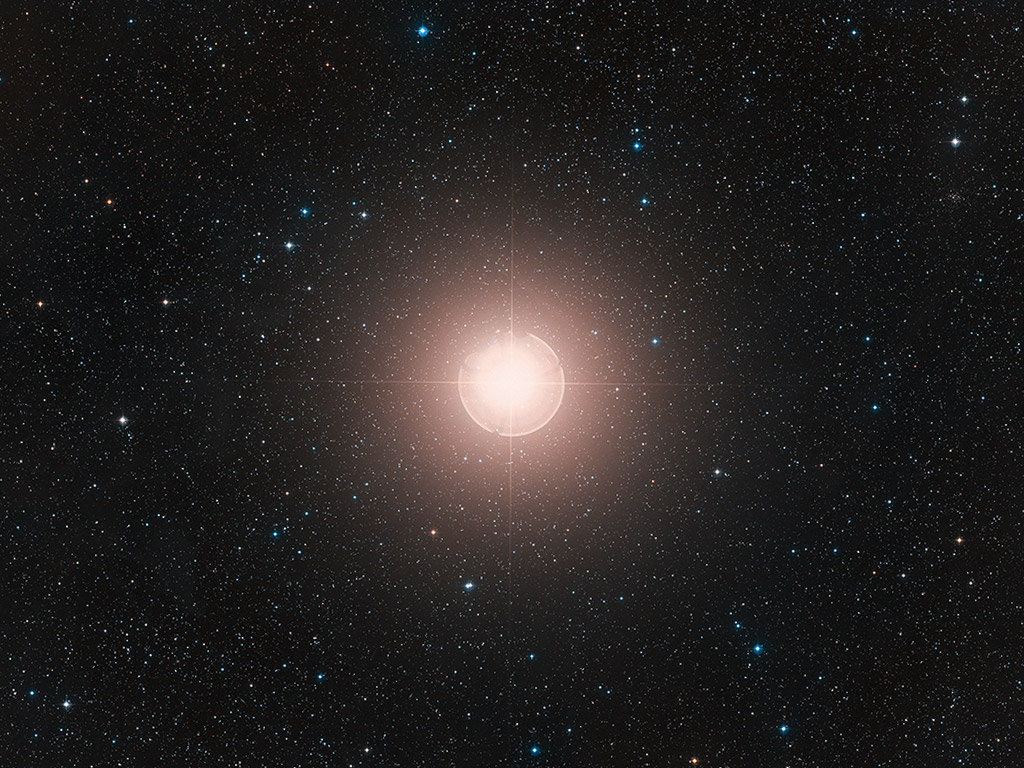
Supernovas are some of the most massive events in the universe. They occur when a massive star that is at least 5 times bigger than the Sun, runs out of fuel to burn. At that moment, the star collapses under its own gravity causing the outer layers of the star to explode quickly and in an extremely violent way.
This exact thing is about to happen to Betelgeuse. Well, when I say “about to”, I mean at some point over the next 10,000 to 100,000 years which for us is a lot but in astronomical terms is the blink of an eye.
Supernovas are quite rare. Scientists believe only 2 or 3 of them occur every century in the galaxy, and we don’t get to see most of them. The last supernova that was observed from Earth happened in 1604 when the star SN 1604 which is now commonly known as “Kepler’s Nova” exploded and became so bright for a few days that it became visible from Earth (it wasn’t before). As a matter of fact, the term “nova” means “new” and is used because, in those days, astronomers were not sure why a new star had suddenly appeared in the sky.
Betelgeuse is very young for a star
The Sun has existed for about 4.6 billion years – that’s 9 zeros – and is expected to live another 5 billion years. But not every star has been around for that long.
Betelgeuse is quite young. Astronomers have calculated its age at somewhere between 8 and 10 million years. That means the Sun is about 460 times older than Betelgeuse.
But if Betelgeuse had formed earlier, it might not have been here anymore.
Massive stars like Betelgeuse have a very short life expectancy. The average red supergiant only lasts for about 10 million years.
This is because the bigger a star is, the faster it burns through its fuel.
Its name means “the hand of Orion”
There’s some debate about the origin of Betelgeuse’s name. But most researchers agree that it comes from the Arabic names for the constellations.
In those days, the constellation of Orion was known as al-Jauzā and also was depicted as a warrior holding a sword and sometimes a bow. The name means “The mightiest one” and was later replaced by the myth of Orion in Greek and Roman times.
Betelgeuse was then named Yad al-Jauzā (“the hand of Orion”) and during the Renaissance, it was changed to Bait al-Jauzā (“the house of Orion”). From there, after just a couple of mispronunciations and Romanizations, we went from Bait al-Jauzā to Betelgeuse.
One day Betelgeuse will be visible during the day
When Betelgeuse explodes into a supernova, it will be a sight to see from Earth. We’ll be safe from any shockwave or effect from the explosion, but we will be able to see it change in the sky.
For about 3 months, Betelgeuse will become the brightest star in the night sky and it will be as bright as a half-moon. And for one week, it will be so bright that it will be visible during the day.
This is not the first time this has happened in the history of mankind. In 185 A.D. Chinese and Roman astronomers left records of a “guest star” that suddenly appeared in the sky and was visible during the daytime. This star was visible in the night sky for eight months.
Ancient civilizations saw Betelgeuse as a yellow star
Betelgeuse is famous for its red color that contrasts against the night sky and differentiates it from the rest of the white and blue stars.
But it is possible that Betelgeuse has only been red in modern times. There are records of Chinese astronomers that describe Betelgeuse as having a distinct yellowish color.
As mentioned above, massive stars have short lifespans, which also means they go through their phases much faster than smaller stars. Astronomers think this observation was most likely correct, and that Betelgeuse was a yellow-white star just a couple thousand years ago, which is nothing in astronomical terms.
The change in color tells us a lot about Betelgeuse’s age and it is one of the signs that it ran out of hydrogen and is on the verge of going supernova.
Betelgeuse doesn’t have any planets
Not all stars have planetary systems. And some don’t even have a cluster of stars they belong to. Such is the case of Betelgeuse.
Betelgeuse is considered a runaway star, which means it is isolated and traveling through interplanetary space by itself at fast speeds. Runaway stars are not that common and are usually the result of a collision or a gravitational interaction that ejected them out of their star group.

